Comprehensive Guide to Garden Fence Installation by Your Local Gardener
Introduction to Garden Fencing
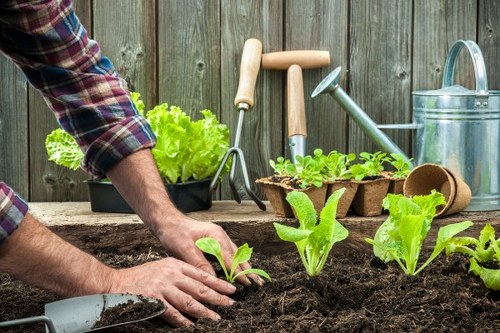
Installing a garden fence is a valuable addition to any outdoor space. Not only does it enhance the aesthetic appeal of your garden, but it also provides privacy, security, and defines the boundaries of your property. Whether you’re looking to keep pets and children safe or simply desire a charming barrier to separate different garden areas, a well-installed fence can make a significant difference.
When considering garden fence installation, partnering with a local gardener who understands the unique requirements of your area can ensure the best results. Local experts are familiar with the climate, soil conditions, and plant life, allowing them to recommend and install fences that complement your garden’s natural beauty.
This guide will walk you through the essential aspects of garden fence installation, offering insights into choosing the right materials, design considerations, and maintenance tips to keep your fence looking pristine for years to come.
Choosing the Right Fence Material

One of the first decisions in garden fence installation is selecting the appropriate material. The choice of material impacts not only the look of your fence but also its durability and maintenance requirements. Here are some popular options:
Wood Fences
Wood fences are a classic choice, offering a natural and versatile look that can blend seamlessly with any garden style. They can be painted or stained to match your garden’s color scheme and are available in various styles such as picket, lattice, or panel.
Pros:
- Natural aesthetic
- Customizable with paint or stain
- Variety of styles
Cons:
- Requires regular maintenance
- Susceptible to weather damage
- Can be more expensive over time
Metal Fences: Strength and Longevity
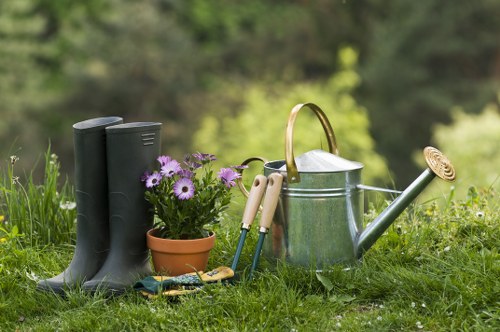
Metal fences, including options like wrought iron, aluminum, and steel, are renowned for their strength and longevity. They provide a more formal and structured appearance, making them ideal for defining property lines and adding a touch of elegance to your garden.
Wrought Iron Fences
Wrought iron fences are highly durable and can be crafted into intricate designs, offering both security and aesthetic appeal. They require minimal maintenance and are resistant to rust when properly treated.
Pros:
- High durability
- Elegant and intricate designs
- Low maintenance
Cons:
- Higher initial cost
- May require protective coatings
Vinyl Fences: Low Maintenance Options
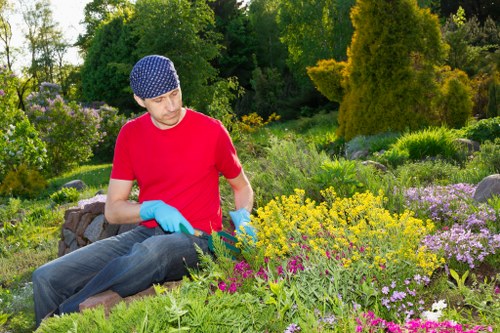
Vinyl fences are an excellent choice for those seeking a low-maintenance solution. Made from durable plastic materials, vinyl fences are resistant to rot, insects, and harsh weather conditions. They are available in various styles and colors, making them highly adaptable to different garden themes.
Advantages of Vinyl Fencing
Vinyl fences require minimal upkeep compared to traditional wood or metal fences. They do not need painting or staining and are easy to clean with just soap and water. Additionally, vinyl fences retain their color and shape over time, ensuring a long-lasting appearance.
Pros:
- Low maintenance
- Resistant to weather and pests
- Variety of styles and colors
Cons:
- Can be less strong than metal options
- Limited repair options
Design Considerations for Your Garden Fence
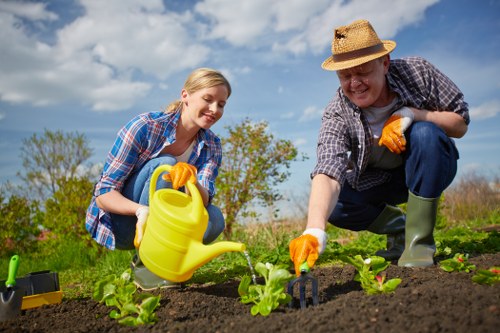
When planning your garden fence installation, several design factors should be taken into account to ensure that the final result aligns with your vision and functional needs.
Height and Privacy
The height of your fence plays a crucial role in determining the level of privacy it provides. Taller fences offer more seclusion, which is ideal for blocking out neighbors or creating a private retreat in your garden. However, it’s essential to check local regulations regarding fence heights to ensure compliance.
Style and Aesthetics
Your fence should complement the overall style of your garden. Whether your garden has a modern, rustic, or traditional theme, selecting a fence style that harmonizes with your plants and garden structures will enhance its visual appeal.
Functionality
Consider the primary purpose of your fence. Are you aiming to keep pets safe, define property lines, or add ornamental value? Understanding the functionality will help you choose the right materials and design elements that align with your goals.
Installation Process: Step-by-Step Guide
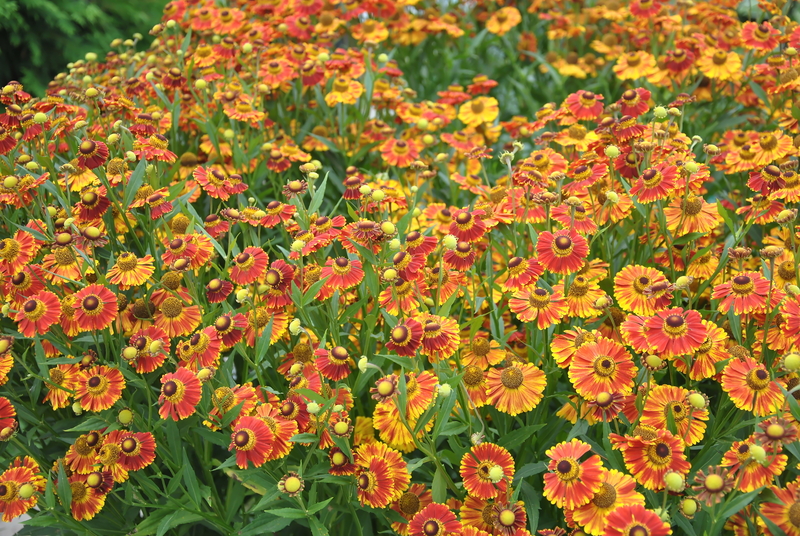
Proper installation is critical to the longevity and effectiveness of your garden fence. Here’s a step-by-step guide to ensure a successful installation:
1. Planning and Measuring
Begin by measuring the area where the fence will be installed. Mark the boundaries and determine the number of fence panels needed. Consider any terrain challenges such as slopes or uneven ground that may affect the installation process.
2. Gathering Materials and Tools
Ensure you have all necessary materials and tools before starting. This typically includes fence panels, posts, concrete, a post hole digger, a level, and necessary hardware.
3. Installing Fence Posts
Dig holes for the fence posts, ensuring they are deep enough to provide stability—typically one-third of the post height. Place the posts in the holes, check for level alignment, and fill the holes with concrete. Allow the concrete to set according to the manufacturer’s instructions.
4. Attaching Fence Panels
Once the posts are secure, attach the fence panels to the posts using appropriate screws or nails. Ensure each panel is level and properly aligned before fully securing them.
5. Finishing Touches
After all panels are installed, add any desired finishing touches such as caps for the posts, decorative elements, or additional hardware to enhance the fence’s appearance and functionality.
Maintenance Tips for Longevity
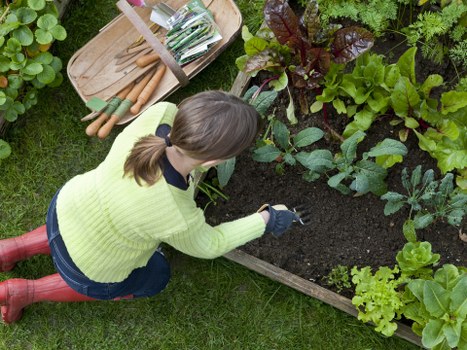
Maintaining your garden fence ensures it remains sturdy and attractive over time. Regular maintenance tasks can prevent minor issues from becoming major problems.
Regular Inspections
Conduct periodic inspections to check for signs of wear and tear, such as loose boards, rusted metal, or damaged paint. Addressing these issues promptly can extend the life of your fence.
Cleaning
Keep your fence clean by sweeping away debris and washing it with appropriate cleaners. Wooden fences may require sanding and repainting, while metal fences benefit from rust treatment and repainting if necessary.
Repairs
Fix any broken or damaged parts immediately. Replace missing boards, tighten loose screws, and treat or replace rusted metal components to maintain the fence’s integrity.
Seasonal Maintenance
Different seasons can impact your fence differently. Protect it against harsh winters by ensuring no ice or snow buildup, and prepare for summer heat by checking for paint or stain fading.
Benefits of Hiring a Local Gardener for Fence Installation
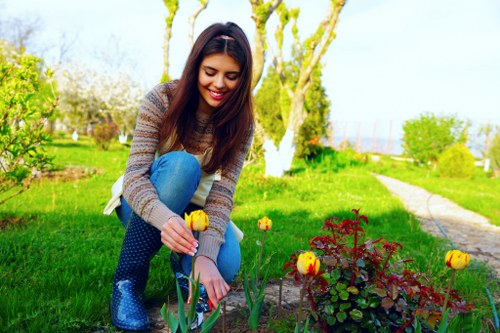
Opting for a local gardener to handle your garden fence installation offers several advantages. Local professionals bring a wealth of knowledge about regional plant species, soil types, and climate conditions, ensuring your fence complements your garden and stands up to local weather patterns.
Personalized Service
Local gardeners can provide personalized recommendations based on your specific garden layout and your aesthetic preferences. Their hands-on experience in the area allows them to foresee potential challenges and address them effectively during installation.
Support Local Economy
By hiring a local gardener, you’re supporting your community’s economy and fostering relationships with trusted service providers. This can lead to ongoing support and maintenance services as needed.
Quick Response Times
Local professionals are typically more responsive and available for consultations, installations, and any follow-up services. Their proximity ensures timely project completion and efficient handling of any issues that may arise.
Environmental Considerations
Local gardeners are often more attuned to sustainable practices and environmentally friendly materials that suit your region. They can advise on eco-friendly fencing options that minimize environmental impact.
Cost Factors in Garden Fence Installation
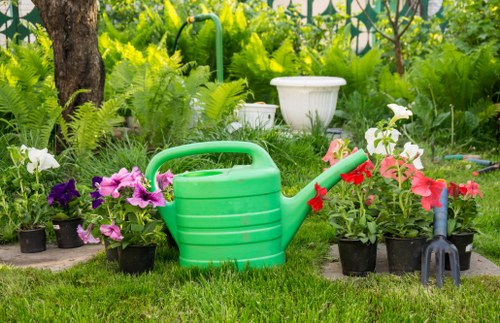
The cost of garden fence installation can vary based on several factors. Understanding these can help you budget effectively and make informed decisions.
Material Costs
The type of material you choose significantly influences the overall cost. For instance, wood and vinyl are generally more affordable, while wrought iron and steel can be more expensive but offer greater durability.
Fence Height and Length
The size of the area to be fenced impacts material costs and labor. Taller and longer fences require more materials and time to install, increasing the total cost.
Installation Complexity
Complex terrains with slopes, rocks, or uneven ground can add to the installation difficulty and time, thereby increasing the cost. Simple, flat surfaces are generally easier and cheaper to work with.
Add-Ons and Custom Features
Additional features such as gates, decorative elements, or specialized fastenings can also affect the overall price. Custom designs may require more labor and specialized materials, contributing to higher costs.
Maintenance and Longevity
While some materials may have a higher upfront cost, they might offer lower maintenance costs and longer lifespans. It’s essential to consider the long-term investment when choosing your fence material.
Permits and Regulations
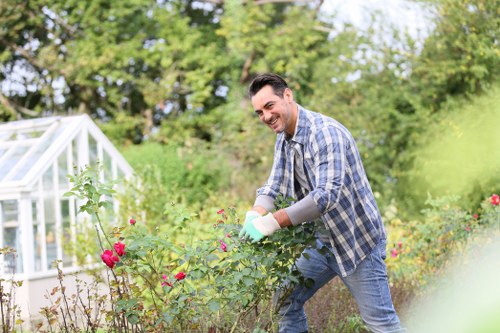
Before embarking on your garden fence installation project, it’s crucial to understand any local permits and regulations. Compliance with these rules ensures your fence meets safety standards and avoids potential fines or legal issues.
Local Zoning Laws
Check with your local municipality about zoning laws that dictate fence height, materials, and placement. These regulations vary by area and can influence your design choices.
Property Boundaries
Accurate knowledge of your property lines is essential to prevent encroachment on neighboring properties. Consider hiring a surveyor to mark precise boundaries before installation.
Homeowners Association (HOA) Rules
If you live in a community governed by an HOA, review their guidelines regarding fence installation. There may be specific requirements for appearance, height, and materials that you need to follow.
Permit Application Process
Obtaining the necessary permits typically involves submitting plans and measurements to your local building department. Ensure you factor in the time required for approval when planning your project timeline.
Environmental Impact and Sustainability
In today’s eco-conscious world, considering the environmental impact of your garden fence is more important than ever. Opting for sustainable materials and practices can reduce your ecological footprint and contribute to a healthier environment.
Sustainable Materials
Choose materials that are renewable, recyclable, or have a low environmental impact. Bamboo, recycled metal, and sustainably sourced wood are excellent choices for environmentally friendly fencing.
Eco-Friendly Practices
Employing sustainable installation practices, such as minimizing waste and using non-toxic treatments, can further reduce your fence’s environmental impact. Local gardeners often have experience with these practices and can guide you accordingly.
Long-Term Sustainability
Selecting durable materials that require less frequent replacement contributes to sustainability. A high-quality fence that lasts longer reduces the need for additional resources and labor over time.
Impact on Local Wildlife
Consider how your fence design affects local wildlife. For example, certain materials or heights may deter birds or other beneficial creatures. Ensuring your fence is wildlife-friendly can promote a balanced ecosystem in your garden.
Enhancing Your Garden with Fencing
A well-installed garden fence can significantly enhance the beauty and functionality of your outdoor space. Here are some ways to maximize the benefits of your fence installation:
Creating Defined Spaces
Fences can help create distinct areas within your garden for different purposes, such as seating areas, vegetable patches, or play zones for children. This organization can make your garden more usable and visually appealing.
Adding Vertical Interest
Incorporate vertical gardening elements such as trellises, hanging plants, or climbing vines onto your fence to add depth and texture to your garden. This not only beautifies the space but also maximizes plant growth areas.
Lighting Integration
Integrate lighting fixtures into your fence design to create a welcoming ambiance in the evenings. Solar-powered lights, string lights, or built-in LED fixtures can highlight your fence and garden features effectively.
Artistic Elements
Add artistic touches such as murals, decorative panels, or unique post designs to make your fence a focal point in the garden. Personalizing your fence can reflect your style and enhance the overall charm of your outdoor area.
Security Features
Enhancing your fence with security features like locks on gates, motion sensor lights, or surveillance cameras can provide added protection and peace of mind, especially if you have valuable plants or need to secure the area.
Cost-Saving Tips for Fence Installation
Installing a garden fence can be a significant investment, but there are ways to manage costs without compromising quality. Here are some cost-saving tips to consider:
Plan Ahead
Careful planning can prevent unexpected expenses. Accurately measure your garden space, choose materials wisely, and plan the fence layout to minimize waste and reduce costs.
DIY vs. Professional Installation
While hiring a professional guarantees quality, some elements of fence installation can be handled as DIY projects to save money. Assess your skills and consider partial installations to manage costs effectively.
Choose Economical Materials
Select materials that offer a good balance between cost and durability. For example, pressure-treated wood can be a cost-effective option for long-lasting fences compared to untreated wood.
Bulk Purchasing
Buying materials in bulk can often secure discounts. If you have a large garden or plan to install multiple fences, this can lead to significant savings.
Reusing Existing Materials
If you’re replacing an old fence, recycling or reusing existing materials where possible can lower material costs. Ensure reclaimed materials are still in good condition to maintain fence integrity.
Common Mistakes to Avoid
Proper planning and execution are essential to avoid costly mistakes during garden fence installation. Here are some common pitfalls to be aware of:
Poor Planning
Failing to plan adequately can result in misaligned fences, insufficient materials, or non-compliance with local regulations. Invest time in thorough planning to ensure a smooth installation process.
Ignoring Soil Conditions
Different soil types require different post installation techniques. Ignoring soil conditions can lead to unstable fences. Consult with local gardeners to determine the best approach for your soil type.
Incorrect Measurements
Inaccurate measurements can lead to material shortages or excess waste. Double-check all measurements before purchasing materials to avoid unnecessary expenses.
Overlooking Maintenance Needs
Choosing materials that require excessive maintenance or not planning for upkeep can decrease the lifespan of your fence. Select materials that match your maintenance capabilities and garden care routine.
Skipping Permits
Installing a fence without obtaining necessary permits can result in fines and the need to modify or remove the fence. Always check local regulations and secure permits before beginning installation.
Conclusion
Garden fence installation is a transformative project that can enhance the beauty, functionality, and security of your outdoor space. By carefully selecting the right materials, planning the design, and partnering with a knowledgeable local gardener, you can achieve a stunning and durable fence that complements your garden’s unique character.
Remember to consider factors such as material costs, maintenance requirements, local regulations, and environmental impact when planning your fence installation. With the right approach and professional guidance, your garden fence will not only serve its practical purposes but also become a beautiful feature that you and your family can enjoy for years to come.
Ready to transform your garden with a beautiful new fence? Contact us today to schedule your installation consultation and take the first step towards a more secure and aesthetically pleasing outdoor space.